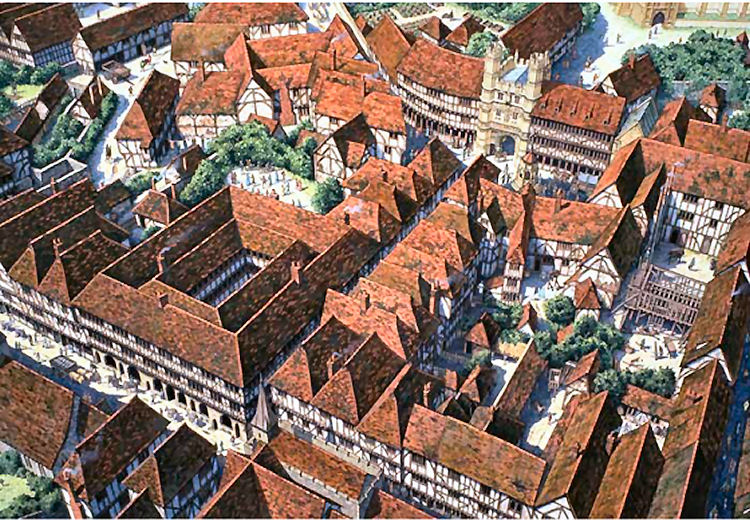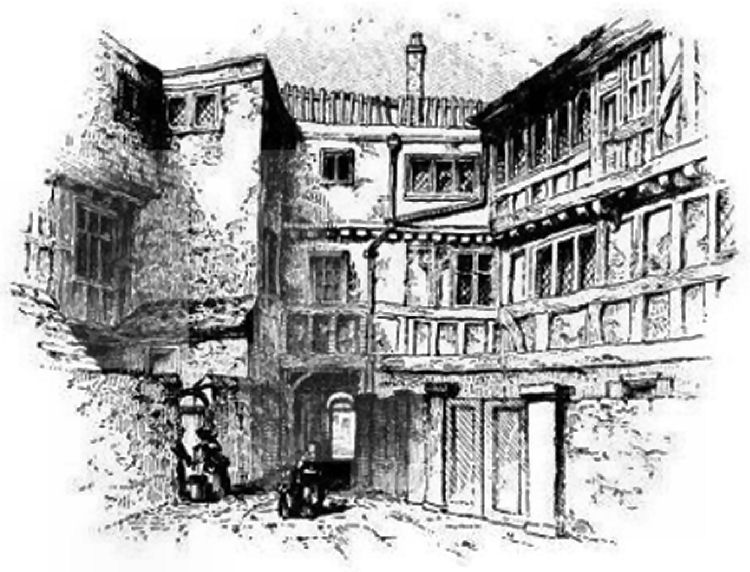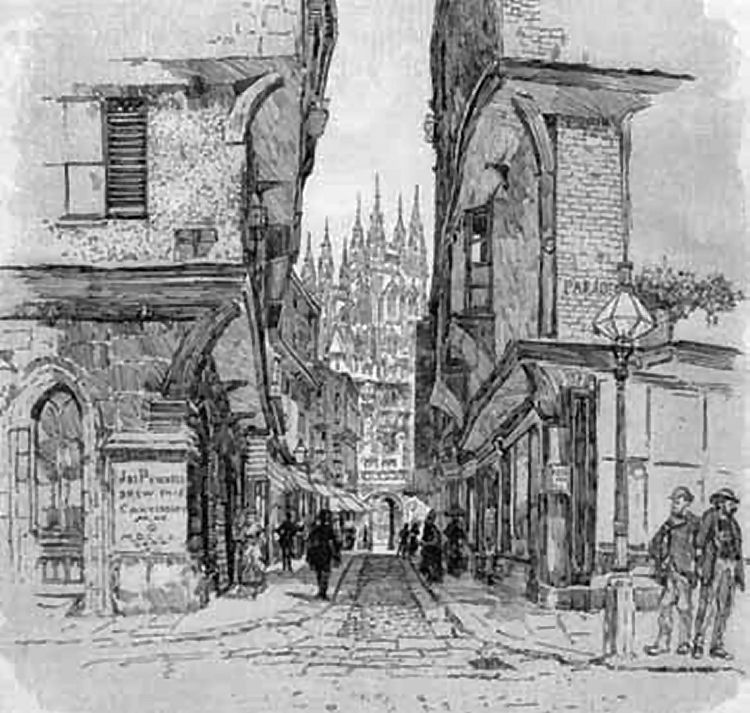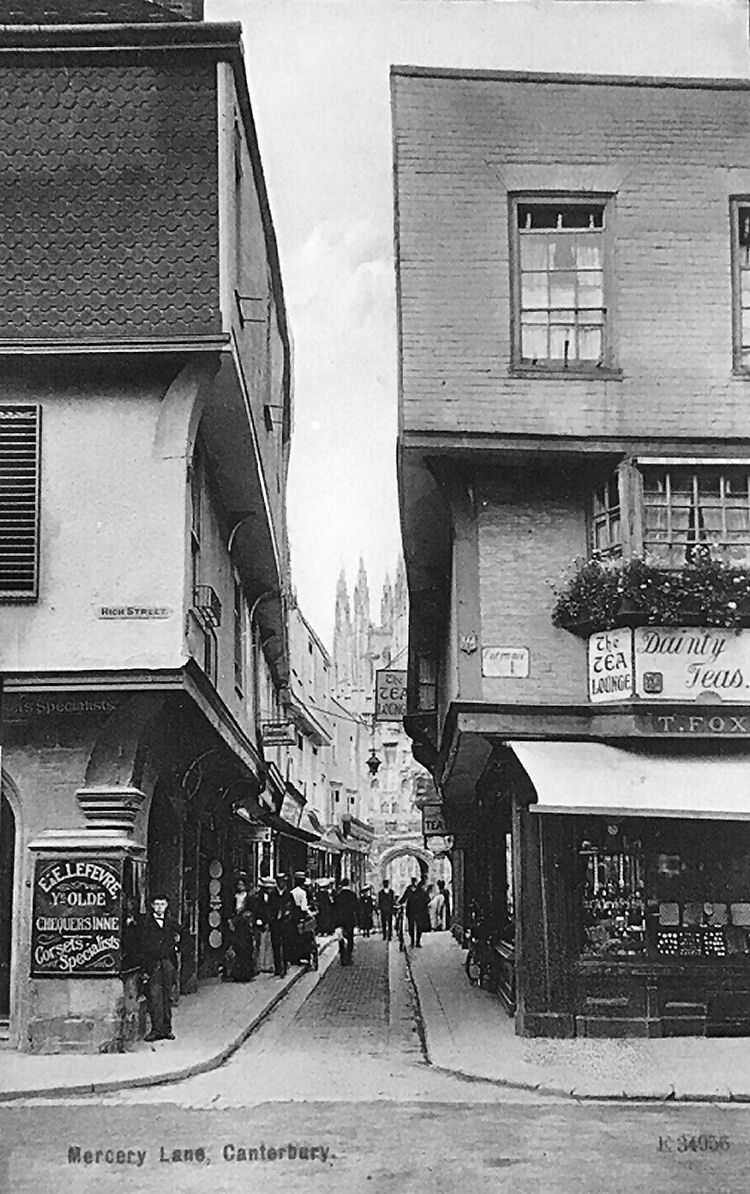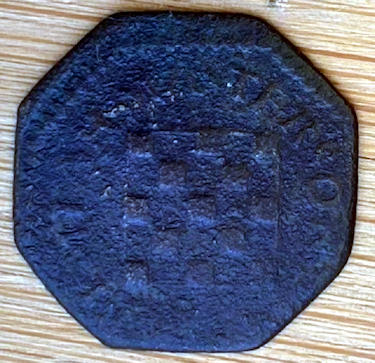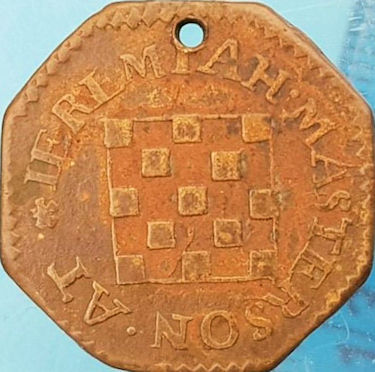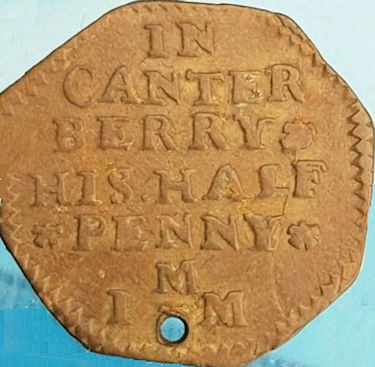Sort file:- Canterbury, September, 2025. |
|||||||||||||
Page Updated:- Tuesday, 16 September, 2025. |
|||||||||||||
| PUB LIST | PUBLIC HOUSES | Paul Skelton | |||||||||||
|
Earliest 1170+ |
Chequer of the Hope (Ckeker) |
Latest 1825 |
|||||||||||
|
Mercery Lane (Near St. Augustine's Monastery 1824 Canterbury
Mention of this pub has been found in a book by Michael David Mirams, titled "Kent Inns and Inn Signs." I believe this is also the same premises that is addressed as Near St. Augustine's Monastery in Pigot's Directory of 1824.
However, I have also received an email from Tricia Baxter who tells me that St Augustine’s Monastery aka St Augustine’s Abbey is over the city wall in Longport. Mercery Lane runs between the High Street and The Buttermarket and on to Christchurch Gate, the entrance to the Cathedral. The Monastery in the Cathedral is Christchurch.
The author says that the most famous of all the pubs called the Chequers was the "Chequer of the Hope" which was situated in Mercery Lane, near the Cathedral, and was probably opened soon after the murder of Thomas Becket in 1170, to cater for the sudden influx of pilgrims to the city.
The inn was rebuilt by Christchurch Priory in 1392 by prior Chillenden at a cost of £867.14s.4d., and the building took three years to complete. It occupied almost half the west side of Mercery Lane, and was further extended in 1435 by the purchase of the "Crown Inn" next door. The ground floor housed workshops with shop fronts with storage provided in the basement. On the first floor was the Chamber of the Hundred Beds, and the inn courtyard had a staircase which allowed access to it. The inn itself had first floor suites with an external gallery overlooking the courtyard for wealthy pilgrims and second floor dormitory under the rafters of the roof for up to 100 less wealthy pilgrims. There was a colonnade in Mercery Lane, beneath which travelling pedlars sold souvenirs such as ‘Becket Brooches' to pilgrims. This was removed during the Commonwealth and the shops on either side of the road brought forward, creating the narrow thoroughfare of today. The unusual name has two possible sources. The first is from the board game played at the inn on tables made of ale or beer barrels (or tuns) stood on their ends which were held together by hoops (or hopes) of iron. The second is from the Cheker building, a counting house in the Priory, referring to the counting of hopes that pilgrims felt for their visit to the shrine. The Inn is referred to in Geoffrey Chaucer's “The Tale of Beryn” as the resting place of the pilgrims whose stories are told in the Canterbury Tales. Another fourteenth century writer tells us that:- "When all this merry fellowship were come to Canterbury, They took ther in and lodged them at mydmorowe I trow, At Checker Of The Hope that manie a man doth know.'
After the Dissolution of the Monasteries and the end of the pilgrimages, the Chequer continued to function as an inn. In 1593 the different rooms into which the Chamber of the Hundred Beds had been divided were used by private parties and known by various names: King's Chamber, White Hart, St George's Chamber etc. The "Chequer of the Hope" ceased to be an inn c.1825, and much of western end of the building was destroyed in a great fire on 18 August 1865, but the facades on the High Street and Mercery Lane escaped substantially undamaged. 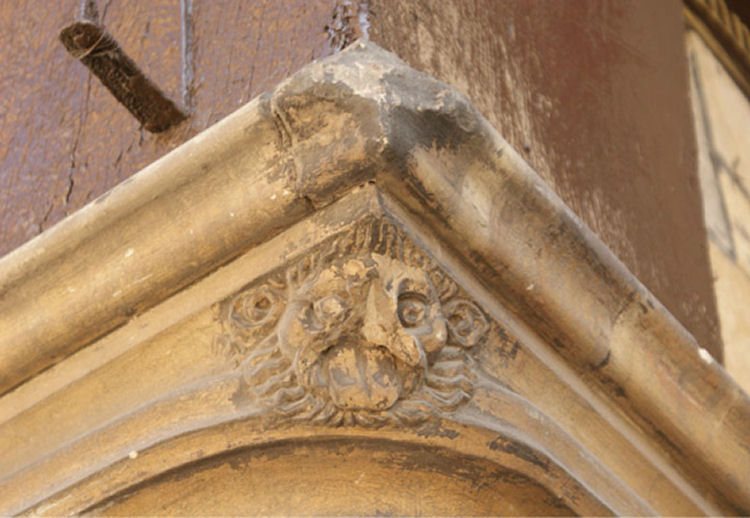
Above photo showing a cognizance, a distinguishing badge or bearing in heraldry, said to be that of the Black Prince. A similar lion image appears on his achievements displayed above his tomb in the cathedral. On Friday 15 September 1592, on a visit home to Canterbury, somewhere close to the corner of Mercery Lane, Christopher Marlowe attacked a tailor, William Corkine, with a staff and dagger. Corkine filed a case for assault in the civil court. In return, Marlowe pressed criminal charges against Corkine. Three hundred and sixty-five years after both cases were dropped, Canterbury's Cathedral and City Archivist, Dr William Urry, discovered a rosebud pressed between the pages of the town sergeant's plea book. Could this have been a peace offering between Marlowe and Corkine?
LICENSEE LIST MASTERTON Jeremiah 1752+ ELVERY John 1824-28+
|
|||||||||||||
|
If anyone should have any further information, or indeed any pictures or photographs of the above licensed premises, please email:-
|
|||||||||||||
| TOP |
|
|
|||||||||||
